Deciding on what you need can be a challenge…
With so many options available, and so much variety between them, how do you know what you which audio interface will best suit your needs?
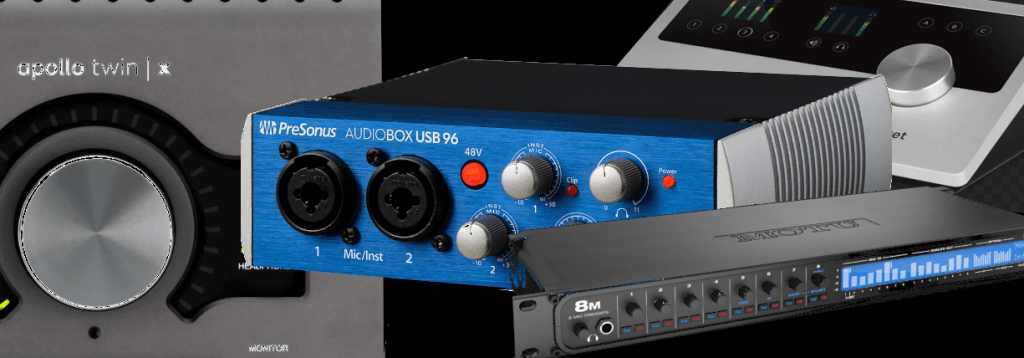
Why?
To begin with, you have to know why you need an audio interface. This is a question I get time and time again, and if you’ve not worked with audio productions hardware and software before, it’s a very fair question…your computer already has a sound card, and an output jack, right?
Well, that’s true, but that sound card can leave a lot to be desired, both with regard to its connectivity and quality. Most regular computer sound cards only offer consumer-grade hardware connections, like a stereo line level input for connecting audio and headphone outputs.
If you want to use external microphones and instruments, you need quality inputs and outputs…XLR connections for mics, Hi-Z 1/4″ inputs for guitar, line in 1/4″ jacks, line in 3.5mm stereo connections, phantom power…the list goes on. You need high quality preamps that will perform analog to digital (A/D) and digital to analog (D/A) conversion, which takes analog audio signals and converts them to the 1s and 0s of code that your computer can understand.
What?
Specifically, what do you look for when buying and audio interface. What I recommend you look for, in order of importance, is as follows:
- Inputs and Outputs (I/O)
- Computer/device connectivity
- Budget/Price
- Sound quality
Inputs and Outputs
This is one of the most important aspects when making your decision is how many inputs and output you need. I always recommend my groups get at least a 4 output audio interface, like the Scarlett 8i6. Having multiple outputs allows you to get a little more creative with your output routing.
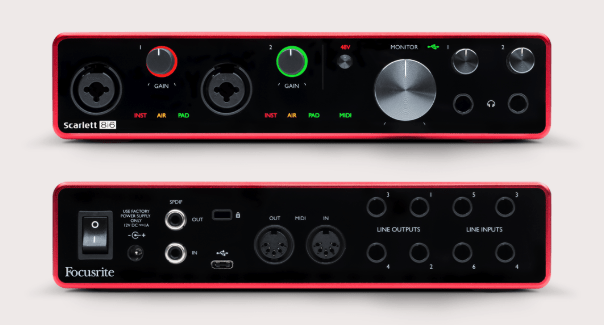
For example, if I am using a laptop to manage both my synths (let’s say I have 2 synth players) and samples, my preference is to route as many of those elements as I can to the board separately so that I have more control at the board when I need to make adjustments. So if I had an audio interface with 6 or more outputs, ideally I’d want to route Synth 1 as a stereo pair, Synth 2 as a stereo pair, and the samples as a stereo pair.
If I wasn’t doing this, and was instead just outputting a single stereo pair for both synths and the samples, then I’d be limited in my ability to react and fix volume issues at the board that might crop up…Synth 1 and the samples could be at the exact right volume, but perhaps Synth 2 accidentally bumped their volume fader and they’re way too loud…with only a stereo pair running to the mixer, my only options are to pull down the faders controlling all the electronics and make Synth 1 and the samples too soft, or leave it alone and live with Synth 2 being too loud…neither being an ideal situation.
If you don’t plan on ever outputting more than a stereo output from your computer, then you can get by with a smaller audio interface, such as the Presonus Audiobox or the Scarlett 2i2
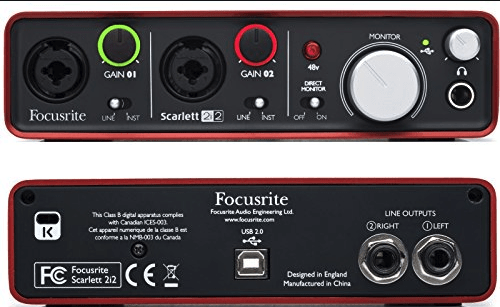
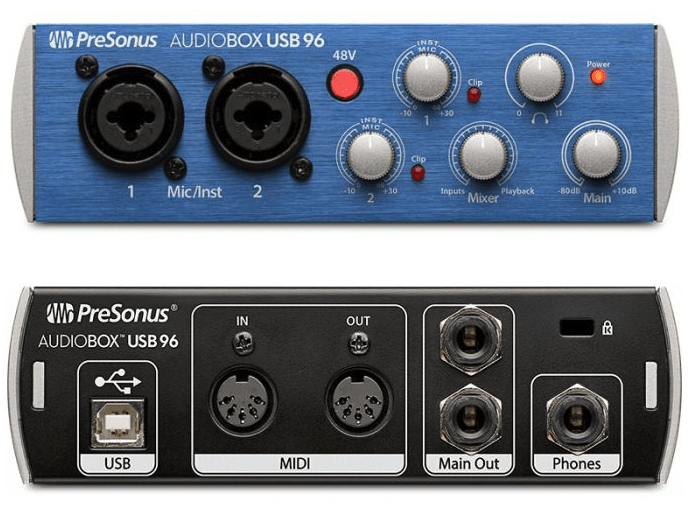
While there are circumstances in the marching audio world that require the routing of external audio through a laptop, in most cases you won’t be plugging any mics or instruments into your interface. However, if you’d like to use your laptop to process and effect some soloists, or if you’re running short on channels on your mixer and need to sub-mix a few of your mics down to a single stereo pair, you might want to consider what sort of audio input capabilities your interfaces has as well.
If you’re going to be running an electric bass, keyboard, or guitar through your laptop, as I sometimes see done, then you’re going to want to make sure the audio inputs are what is referred to as Hi-Z inputs, which are instrument-level inputs.
If you want to connect external gear like samplers and multi-fx units, you’ll need line level inputs.
If you think you’ll need a large number of inputs and outputs, more than the standard 8/10 that you’ll most often find built into your interface, then you’ll want to make sure that you’re using an ADAT capable audio interface. ADAT connections will allow you to expand it’s inputs and outputs through the connection of another ADAT-enable audio interface or preamp.
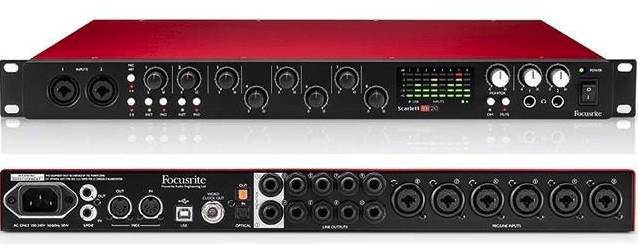

Computer/Device Connectability
Most audio interfaces will work with either Mac or PC, but it is important to check before purchasing to make sure.
USB audio interfaces are arguably the most common, and you’ll find USB 2.0 and 3.0 ports on nearly every modern computer.
FireWire is not as common anymore, but is an extremely fast and reliable connection
Thunderbolt is the newest connector to find common usage among audio interfaces, and is installed on all new Mac computers.
Budget/Price
Always an important consideration, and luckily in the case of audio interfaces, not a consideration that requires a lot of sacrifice…You’ll find a wide variety of audio interfaces within the $100 – $500 price range, from simple 2in/2outs to large multichannel ones like the Scarlett 18i20 or Motu 828 series. Be sure to check my article on equipment suggestions for more information as to what I recommend.
Sound Quality
The reason why I put sound quality as a consideration behind budget/price is simply because within the price range you’re going to most likely be considering, and taking into consideration the use of your interface within the marching activity, you’ll not really find yourself needing an audio interface with top-of-the-line AD/DA converters or sampling rates in the 96kHz – 192kHz…all you need is a solid, decent piece of gear, and anything in this $100 – $500 price range is going to deliver.
Hope you found this helpful! Please be sure to reach out if you have any questions or would like some gear guidance that you can’t find on my gear suggestions post.
